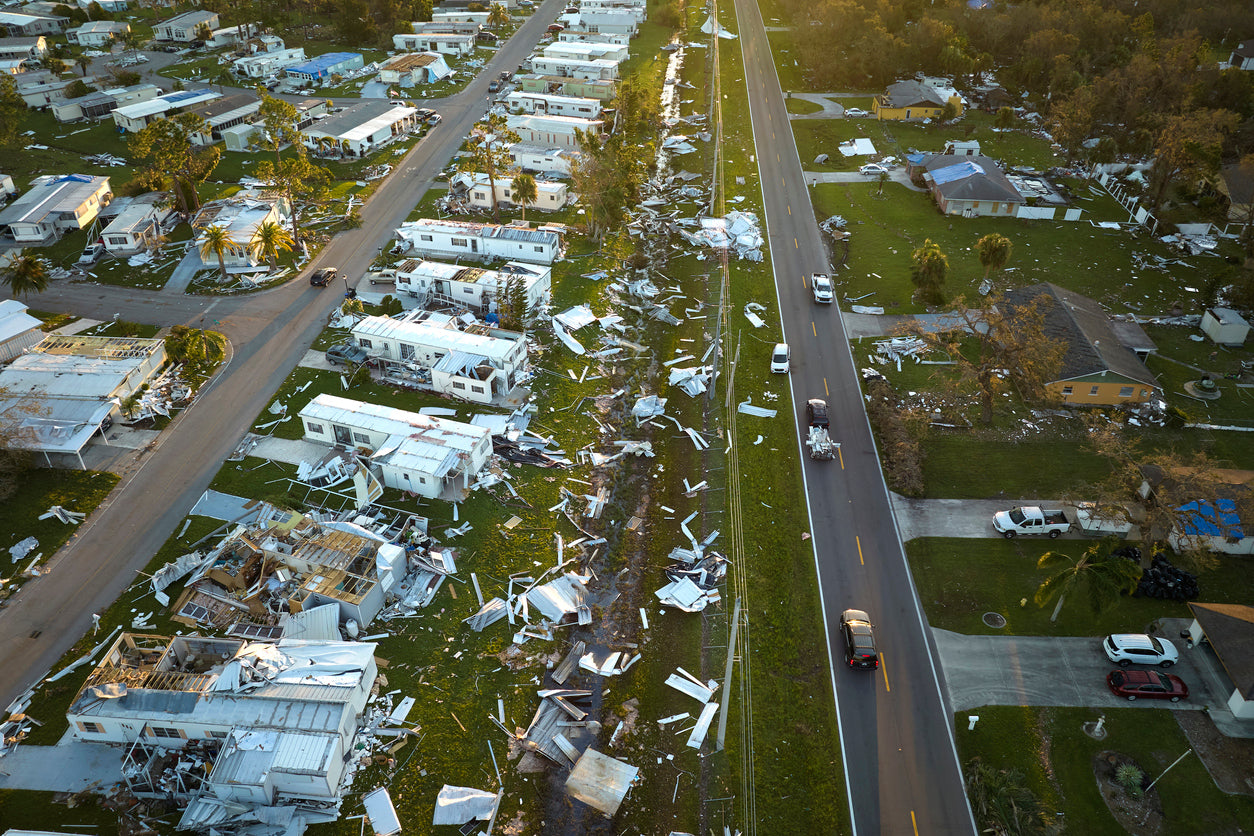Tornados are classified as natural disasters and involve spinning air in a tube that is formed from thunderstorms that come in contact with the ground. Tornadoes can be very dangerous and have the ability to uproot trees, knock buildings down, move vehicles, or destroy anything in their path. Hail, flash flooding, lighting, and heavy rains are also possible. A tornado can occur anywhere and preparing for one can help to ensure your safety.
Knowing The Difference
Tornado Watches mean there is a tornado either near or possibly in your area. With a Tornado Watch be prepared to act quickly.
Tornado Warnings mean that you need to take action right away. This involves moving to a safer location immediately.
What Should You Be Doing Before A Tornado Hits?
Find a shelter location or a room that can withstand strong winds. Your next best option is a room that has no windows on a low level of your home or a sturdy shelter. RVs (recreational vehicles), trailers, manufactured, and mobile homes are never safe locations in a high-wind event. Make the necessary plans ahead to find a sturdy shelter or building before one of these natural disasters hits.
Practice Emergency Drills
Practice emergency drills with your family on how to move as fast as you can to a safe location you have identified. If you are living in an RV or mobile home, make sure you have a safe area to evacuate to.
Make Plans To Remain Connected
These plans include monitoring the local news and weather, signing up for emergency alerts from the government, and buying backup batteries so that you can charge your mobile phone.
Learn About The Difference
With a Tornado Watch, you need to be on alert that a tornado is possible near or in your area. Make sure you and your family are prepared to act quickly.
With a Tornado Warning be prepared to take immediate action since a tornado is close by. In these situations, there will be danger so you will need to move to a safer location as soon as possible.
Prepare Emergency Supplies
Gather water, food, and medications. Pharmacies and stores may be closed. Keep your supplies in a Stay-at-Home Kit or Go-Kit.
Your Go-Kit should contain supplies that will last for at least 72 hours that you will be able to carry on the go. Make sure you include chargers and batteries for any devices you will be taking with you.
Your Stay-at-Home Kit should contain supplies to last you for a minimum of 2 weeks. If you or any other member of your family is on medications, make sure you have enough to last for at least a month.
Keep medical, financial, and personal records in a place that you can access easily. Think about keeping lists of your medication and the dosages on a card that you can take with you.
Learn About Emergency Skills
If possible go on a course to learn about CPR and First Aid to assist others. Make preparations on how you and your family will survive without water, gas, and power.
Knowing the steps you need to take once you have confirmed a tornado warning can improve your chances of surviving one of these natural disasters. Even though you won't be able to do anything to stop a tornado, fast and appropriate action can protect your safety and health.
Top Tips On How to Prepare For A Tornado Disaster

